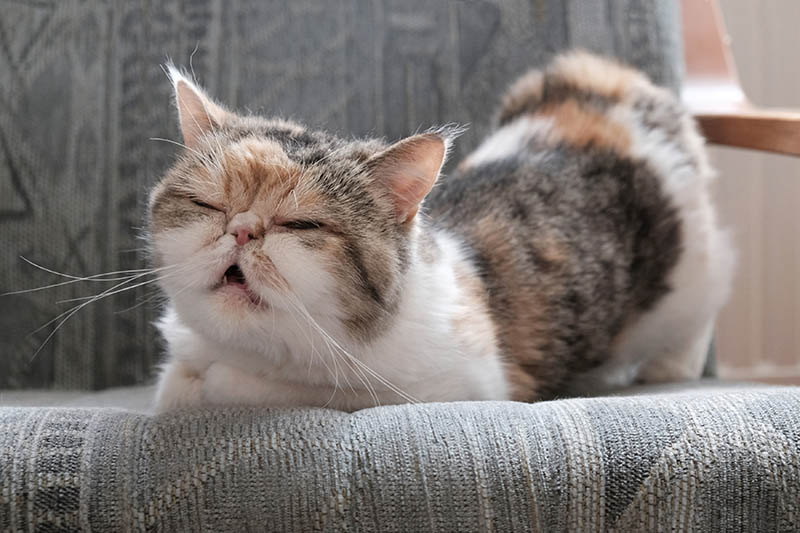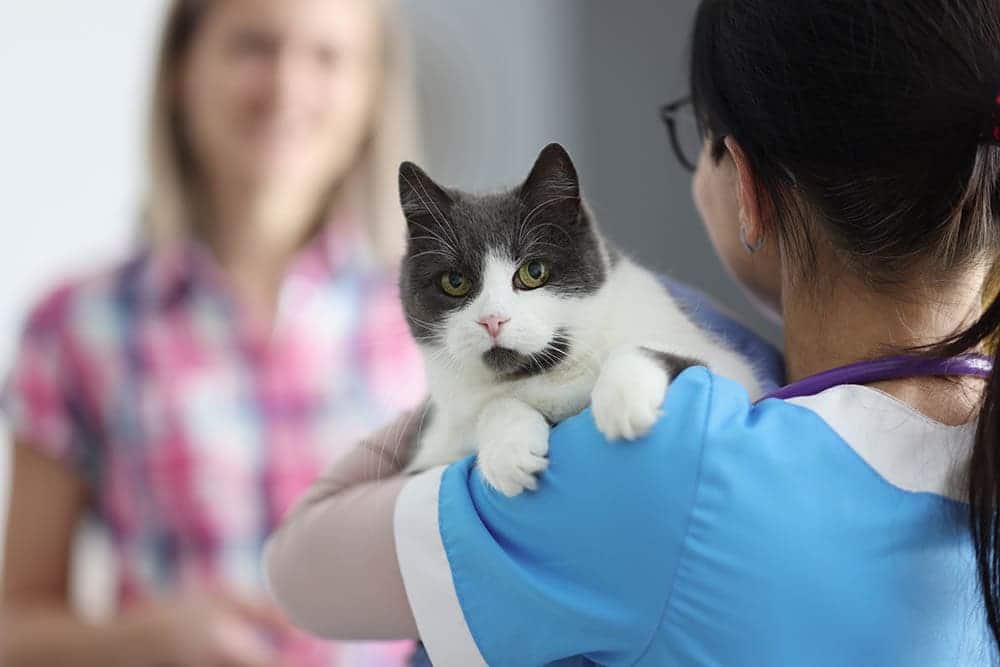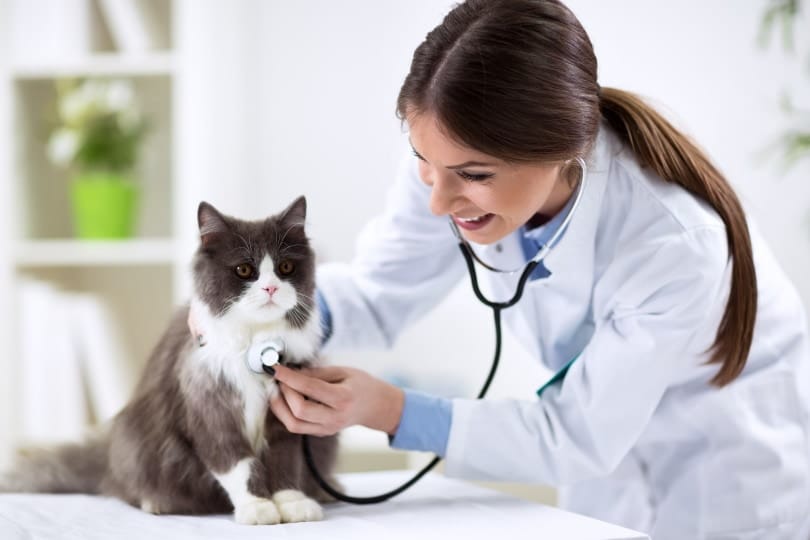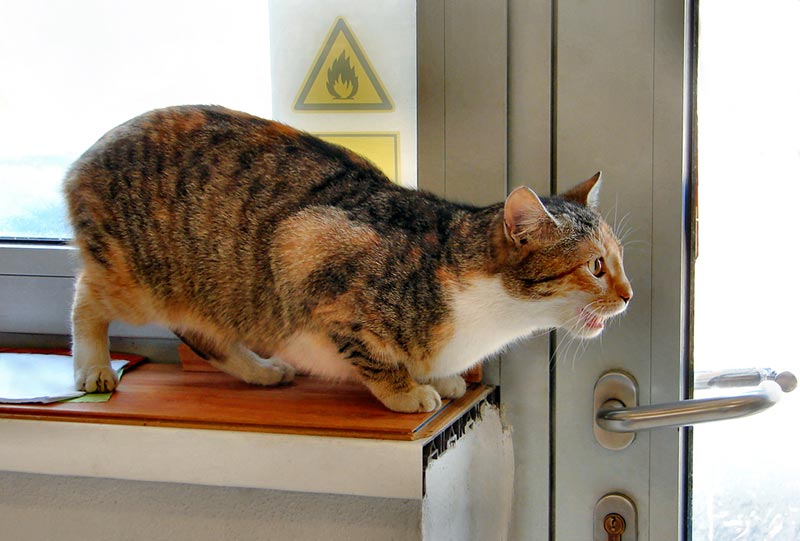Click to Skip Ahead
If this is your first time owning an unspayed cat, it might surprise you how often they go into heat. How much is normal and when should you worry? We break down everything for you here. While some cats will go into heat for longer or shorter time frames, two medical reasons why it can be happening too often are ovarian cysts and ovarian cancer. Once you get to know your cat and their estrous cycle, you’ll have a better idea of what to expect and know when you need to reach out to your vet for more testing.
A Cat’s Normal Estrous Cycle
The estrous cycle refers to the cat’s entire heat cycle. A female cat’s exact time frame in estrous depends on various geographic and environmental factors. According to VCA Animal Hospitals, most cats in the northern hemisphere enter the cycle from January to late fall1.
Each “heat” during the cycle can last anywhere from 1 to 21 days, but most cats experience it for about 7 days. If there isn’t a pregnancy during this time, the female will exit the heat cycle for between 2 and 19 days, though generally for about a week.
Most cats go into heat for 7 to 10 days and be out of heat for 7 to 10 days, and this cycle will repeat from January to late fall. Most of the time, if your cat is in heat often, it’s because that’s how their bodies work!

What Does It Mean If Your Cat Goes Into Heat More Often?
If you think your cat is going into heat more frequently than normal, you must figure out what’s happening. While some cats will go into heat for longer or shorter time frames, they should still fall under the aforementioned parameters.
If they don’t, there’s a possibility that something far more serious is mimicking the signs of a cat in heat. Two common reasons are ovarian cysts and ovarian cancer.
The 2 Medical Reasons Why Your Cat May Go Into Heat More Often
1. Ovarian Cysts
Ovarian cysts are a serious condition that can affect non-spayed cats. Signs of an ovarian cyst can include the following:
- Persistent estrus (longer than 21 days)
- Prolonged behavioral changes such as increased vocalizing
If your cat displays these signs, you must take them to a vet as soon as possible to determine what’s going on and treat them.

2. Ovarian Cancer
Like most cancers, ovarian cancer occurs because of rapid and uncontrolled cell growth. Ovarian cancer starts in the ovaries but can quickly spread to other parts of the cat’s body.
In the early stages, ovarian cancer can have few to no signs, and often, by the time the signs start, it’s difficult to find effective treatment. According to the VCA, the signs of ovarian cancer include:
- Vulvar enlargement
- Vaginal discharge
- Persistent estrus
- Pyometra
- Lethargy
- Loss of appetite
- Weight loss
- Loss of hair
If your cat exhibits any of these symptoms, you need to take them to the vet right away.
When to Take Your Cat to a Vet
Unspayed cats go into heat frequently, and you don’t always need to rush them to the vet. Get to know what’s normal for your cat and compare it to the typical estrus cycle for cats. Once you know your cat’s typical cycle, you’ll know what is not normal for your cat and what may be a potential problem.
Look for abrupt shifts and changes to their cycle that don’t make sense. If you feel that there’s something wrong, there probably is. It’s best to play it safe in these situations and take your cat to a vet for a proper diagnosis.

Final Thoughts
You can dramatically reduce the risk of your cat developing ovarian health issues by spaying them. According to the VCA, spaying a cat eliminates the concern of ovarian cysts and cancers. Also, spaying a cat before their first heat cycle significantly reduces their risk of breast cancer.
Featured Image Credit: Faroe, Shutterstock













